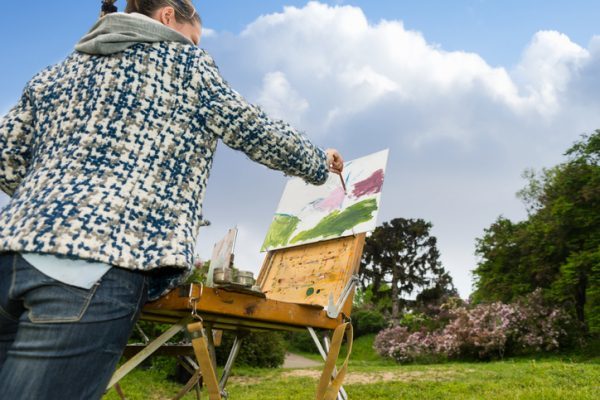Art Therapy For Teens at Providence Pass
The inclusion of Art Therapy For Teens in the Providence Pass portfolio of proven integrated health services strengthens even further the therapeutic potential of our holistic teen-oriented program. Students enjoy Art Therapy. It is a caring, uplifting, and effectively.
Art Therapy is truly advantageous therapy! It is based upon the creative process as expressed through art mediums, and the participating students’ interactive analysis of their work with an Art Therapist. Art Therapy became defined in the 1940s and developed into a recognized, distinct mental health profession facilitated by certified trained art therapists. It works through several different approaches, including Contemplative, Cognitive, Neuroscience, and Behavioral. So it is a multi-faceted practical and effectual therapeutic discipline, while also being engaging and stimulating. e technique for providing teens with an avenue of enjoyable help from which they will benefit.

How it is Applied?
Art Therapy can be successfully applied to clients with physical, mental or emotional problems, diseases and disorders. Any type of visual art medium can be employed within the therapeutic process, including painting, drawing, sculpting, photography, and digital art. This therapy does not constitute a “playtime” or an “arts and crafts” activity.
It is an important means for developing self-awareness, understanding and managing errant behavior and addictions, improving social skills, reducing anxieties, clarifying reality orientation, and improving and balancing self-esteem.
Art Therapy’s underlying purpose is:
1 – To facilitate healing for students with physical, mental, and emotional problems or disorders, and
2 – To provide a means of non-verbal expression—silent communication, wherewith teens can explore and express their thoughts, feelings, perceptions, and deep emotions, and thereby convey what they cannot or will not put into words.
Art Therapy’s fundamental goal is to notably improve a student’s sense of personal well-being and social functioning.
How it Works?
The focus of our Providence Pass Art Therapy program is:
(1) The process of creative art production, and
(2) The analysis of the of interaction that occurs between the creative student and the Art Therapist. This method is referred to as the psychoanalytic approach, which is an enduring form of psychotherapy.
The therapist analyzes the student’s artistic expression and encourages the teen to share his or her own interpretation. Out of this procedure a greater understanding of personal motivations and behavior is developed, opening an opportunity for advancement. Through the unthreatening exchange and analysis of the creative work the student learns to express feelings, hopes, personal opinions, and even ambitions. Good expectations begin to rise. Confidence starts to emerge. Art therapy procedure has long been helping people experience breakthrough with emotional problems.
Keep in mind, Providence Pass Art Therapy directs the teen’s attention to his or her inner experience—insights, emotions, feelings, imagination, and even memories. Of course, developing skill in art mediums and techniques will take place, but our emphasis is the development and expression of images and perceptions that take form and come forth from inside the person, from the teen’s heart and mind. These will provide the internal metaphors, similes, visions, and recollections with which the trained therapist can work. Hence, the teen’s subjective creative aspect, not the visuals of the outside world, are the preeminent focus.
Finally, Art Therapy techniques are basic but effectual. They are undertaken with the assistance of a therapist-counselor, who interacts when needed. The art mediums include, but are not limited to:
• DRAWING
• PAINTING
• CARVING
• SCULPTING
• POTTERY
• TEXTILES
• MOLDING CLAY
• COLORED PENCIL
• CHARCOAL
• COLLAGE
• FINGER PAINTING
Benefits of Art Therapy For Teens
We affirm that Art Therapy, with the accompaniment of trained therapists, has been shown by current research to produce significant therapeutic gains for patients seeking personal growth. Again, it is through accenting creative self-expression and combining it with reflection and analysis. One interesting benefit of Art Therapy is that it stimulates multiple areas of the brain at the same time—concurrently. This, we have learned, promotes strong and healthy cerebral functioning.
How? It invigorates and strengthens neural connection plasticity. Brain plasticity—the forging of the neural connections between cells –allows the brain to change for the better, hence improving cognitive power and memory, for instance. And these benefits come from non-invasive, non-drug art therapy. The happy outcome? The patient can experience a higher quality of life. The positive results benefit teens and help them understand and deal more successfully and confidently with such issues as:
1. ANXIETY
2. DRUG ABUSE & ADDICTIONS
3. STRESS
4. OBSESSIVE COMPULSIVE DISORDER (OCD)
5. POST TRAUMATIC DISORDER (PTSD)
6. ATTENTION DEFICIT DISORDER (ADD)
7. ANOREXIA & OTHER EATING DISORDERS
8. COGNITIVE FUNCTIONING
9. RELATIONSHIP ISSUES
10. MEMORY
Those teens involved in Art Therapy’s interactive help will find they have to commit to the sessions to most fully experience the therapeutic benefits of the approach. The effort is worthwhile. And the Art Therapist will prove to be a very helpful and knowledgeable friend.






